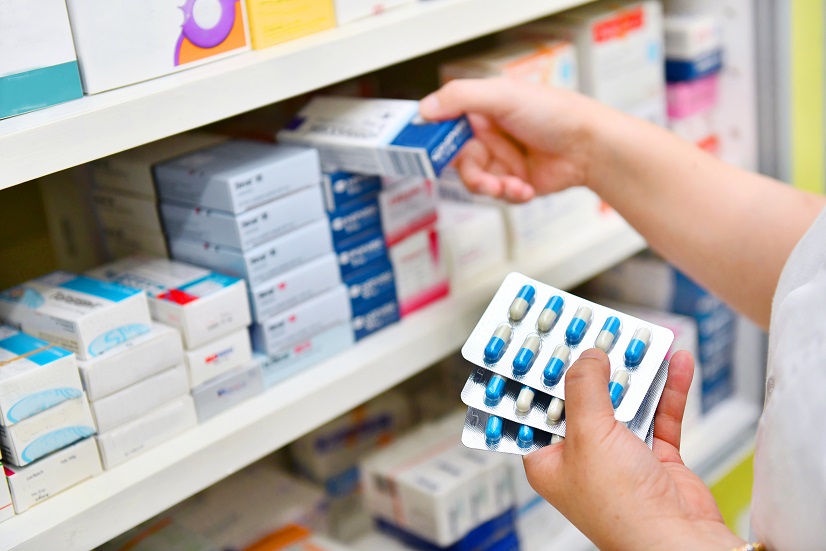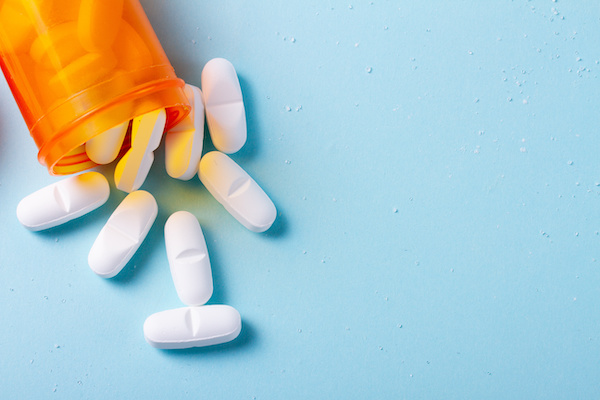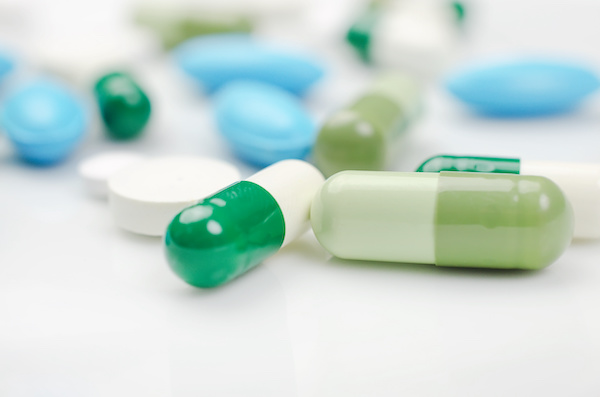Recommended

Blog Post

Blog Post
This note was first published as evidence submitted to the joint inquiry of the UK All-Party Parliamentary Groups (APPGs) on WASH and Antibiotics into the links between antibiotic resistance and lack of access to WASH. The written responses are available here.
The infectious disease and resistance problem
Every year, 1.7 million children under the age of five die from pneumonia or diarrheal diseases. Another 162 million children have a painful bacterial skin infection called impetigo which causes blisters and swelling and results from poor sanitation practices. This means every eighteen and a half seconds, a child dies from pneumonia or diarrhoeal diseases (Hall et al., 2018).
Despite an epidemiological transition in many high-income countries (HICs) from communicable to non-communicable diseases (Omran, 1971), infectious diseases remain one of the biggest killers in many parts of the world. The Institute of Health Metrics and Evaluation estimates that 18 percent of deaths globally are from infectious disease. However, because the people dying from these diseases are disproportionally young, they account for 34 percent of all life years lost to disease. These numbers rise to 51 percent and 66 percent in low-income countries. Moreover, there is concern that with the rise of antibiotic resistance, previously treatable infections may become deadly, and communicable diseases may again be major causes of mortality.
Antibiotic resistance is a major global health threat, already contributing to nearly 5 million deaths per year, with this number predicted to rise over the coming years (Murray et al., 2022). The majority of these deaths occur in low- and middle-income countries (LMICs) – for example, over 99.5 percent of deaths from AMR in children under five occur in LMICs (McDonnell and Klemperer, 2022).
Economic impact
It is very hard to measure the precise economic impact of endemic diseases, in part because the link with poverty runs in both directions. However, we have reason to suspect the current economic burden of bacterial infections and resistance is already quite high. We know that direct health costs from resistance in high-income countries are substantial. For example, a patient in the US with MRSA costs more than twice as much to treat as one who has a susceptible infection (Filice et al., 2010). Costs will be higher in LMICs, too. The risk of illness from infectious disease appears to have a major impact on people’s willingness to travel to a country (Gallup et al., 2000; Smith et al., 2019; Mertzanis and Papastathopoulos, 2021) which in turn impacts tourism and foreign direct investment (FDI). Tourism accounts for 10 percent of the global economy, and has been estimated to be three times more important that ODA for development (Mitchell and Ashley, 2010). Children can miss large amounts of school due to illness, impacting educational outcomes, and adults miss time from work, both due to their own illnesses and looking after others. Finally, reducing the mortality rate has large economic benefits, both in terms of the contributions of the people who would otherwise die, but also the impact it has more widely. Close family members’ output declines hugely through bereavement, with estimates from high-income countries suggesting parent’s productivity more than halves for six months following a child’s death (Fox, Cacciatore and Lacasse, 2014).
If resistance is to get worse, many of these problems will become more profound, and new problems will occur. Routine surgeries such as hip and knee replacements might become too dangerous. Areas of medicine like oncology, where current best practice often leads to a large suppression of the immune system, will have to adapt treatments if they cannot rely on antibiotics to support the patients’ weakened defences (Kwon and Powderly, 2021). This in turn will lead to even more tragic losses in the UK and around the world.
All of this will lead to further economic costs. Even small impacts on economic trend growth rates will lead to a very large economic impact. For example, in 2014 the AMR Review’s cost estimates just considered the impact of people leaving the workforce because of AMR: this was estimated to lead to a less than 0.1 percent reduction in yearly global growth rate. However, the compounding nature of economic growth means that it would still reduce the global economy by an estimated 100tn USD over 35 years (O’Neill, 2014). Taking into account wider indirect costs would predict a far sharper decline. COVID highlighted the extent to which infectious diseases can undermine economic growth, with global growth falling from 2.6 percent in 2019 to negative 3.3 percent in 2020 (World Bank) – only the second negative year since World War Two.
We are likely to pay huge costs if resistance rates continue to rise (indeed, we plausibly pay large costs already). It will be far cheaper to make investments now that prevent the rise in resistance.
WASH as a solution
One intervention with the power to mitigate the threat from both antibiotic resistance and infectious diseases more generally is investment in water, sanitation, and hygiene (WASH). Increasing access to WASH is included in both the millennium development goals and sustainable development goals. For infectious disease to spread, a susceptible individual must come into contact with the disease-producing pathogens. The more connections there are and the greater the risk from each contact, the greater the burden of diseases. COVID showed us that reducing connections in the long run is near impossible. By reducing the chance of faecal-oral transmission when people meet, WASH makes these connections – and by extension all of us – much safer.
There are countless studies showing that this will decrease the spread of many infections. For example, when a US Navy training centre required sailors to wash their hands at least five times a day, doctor visits for respiratory infections fell by 45 percent (Ryan, Christian and Wohlrabe, 2001). As many as 40 percent of hospital acquired infections in the US could be prevented if health workers washed their hands as often as they should (Kampf, Löffler and Gastmeier, 2009). However, undertaking this is near impossible where the infrastructure does not exist. In low-income countries, approximately 35 percent of hospitals do not have soap, and a similar number lack clean running water (WHO, 2015). Staff are often required to wash their hands more than 100 times a day (CDC, 2020). In practice, you likely need a sink beside every patient’s bed, otherwise regular handwashing for medical staff can become hugely time consuming.
This is important for resistance as a reduction in the number of infections will greatly reduce resistance in two ways. By breaking these chains of infections, investment in WASH will decrease the demand for antibiotics. By decreasing the usage of antibiotics, investment in WASH will decrease the rate of resistance developing. Secondly, with greater WASH each resistant infection will spread less, reducing the number of people who get sick, and the opportunity for a resistant infection to become dominant.
Investments in WASH are not gender neutral – evidence shows that poor WASH reinforces gender inequalities (Caruso et al., 2015). For example, women fetching water face risks of infection, injury, and sexual harassment. A lack of WASH in rural healthcare facilities, many of which are responsible for childbirth, is especially concerning, exposing women to risk of infection and maternal mortality. Globally, one million mothers and new-borns die yearly from infections immediately following birth (WaterAid, 2021). One study in East Asia and the Pacific found only 44 percent of hospitals had clean sinks with water, soap, and hand drying equipment in delivery rooms (Mannava et al., 2019). Through investing in WASH, we can reduce infection rates, reduce AMR, and reduce gender inequalities.
Need for action
Antibiotic resistance is inherently a global problem, which necessitates working together. Resistance developing in one country will spread worldwide and impact other countries. Thus, misuse in one country, or poor WASH in one country, will impact the health of other countries. We must learn from the lessons of COVID which demonstrated the interconnectedness of global health and the importance of pandemic preparedness. Hoarding medicines in rich countries is clearly not a tenable solution, as this leaves us vulnerable to variants/ resistant bacteria developing elsewhere and spreading. Instead, we must work to develop infrastructure worldwide to prevent resistance/ variants developing anywhere. We must lay the foundation now, to ensure we are prepared to act as the threat from resistance grows – it was only thanks for previous investments and research that we were able to respond so efficiently to the COVID pandemic.
UK scientific expertise and thought leadership
The UK has long been a global expert and leader in this space. In the 19th century, much of the work showing that cholera and other diseases spread through water rather than air happened here, particularly led by John Snow. This led to a big push in the 19th century towards better water and sanitation, with London becoming one of the first large cities that had a sewer system that drained into the sea. In the 20th century, British scientists discovered penicillin and undertook much of the early work into antibiotics. More recently still, the UK has stayed a leader in this space: the UK established the AMR Review and led much of the diplomatic global effort around AMR, particularly in the G7, G20 and at the UN General Assembly. The Fleming Fund’s work has greatly improved global surveillance systems for AMR and highlighted HMG’s ability to improve global health infrastructure; and NHS England is leading work in piloting a more sustainable way of purchasing antibiotics. Making WASH and AMR a global priority for the FCDO would play into the UK’s national strengths, and it is an area where the UK can continue to greatly improve global health.
Cost effectiveness
The exact cost-benefit will vary greatly by context, but the evidence we have suggests WASH will usually be hugely cost effective in improving health, protecting the world from resistance, and generating economic growth and opportunities. For example, at a cost of less than $1 per person per year, all households in the world’s 46 least developed countries could have handwashing facilities, saving hundreds of thousands of lives (UNICEF and WHO, 2021). According to a 2020 speech by Dr Tedros Adhanom Ghebreyesus of the WHO, “improving hand hygiene can generate savings in health expenditure up to fifteen times the cost”; similarly, the economic benefits from improved sanitation are five times greater than the cost.
Despite the large benefits, WASH is often overlooked. Academic research, government funding, media attention, and the general public are often drawn towards new and glamorous ideas. Reducing contact between people and faeces is neither of these things, and this perhaps explains why the area receives relatively little funding. However, this creates a large gap that the UK can help plug. The UK is expected to move back towards spending 0.7 percent of GNI on ODA in the 2024/25 fiscal year. This will create an expected £5.7bn increase in the budget. In order to get the best value for the UK taxpayer and the maximum benefit for the world’s poorest, HMG and parliament should be planning how best to spend this money. We believe WASH is an area where the benefits would be particularly high.
How the UK government should help lead a response
Two billion people in the world lack access to clean drinking water, and 3.6 billion do not have access to safely managed sanitation in their homes (CDC, 2022). A priority should be working with countries and NGOs to build the basic infrastructure the world needs.
The highest priority countries are those with the greatest epidemiological burden. Hot, densely populated regions tend to be those most at risk. We should prioritise getting WASH to hospitals lacking in clean running water – for example, rural hospitals. However, providing WASH infrastructure in and of itself will not be sufficient – it is also important to consider behavioural change initiatives to ensure people actually utilise the new facilities. Educational programmes that improve handwashing, outline the importance of drinking clean water and reduce open defecation can also greatly improve health, if well run.
Local contexts and political preference will dictate whether bilateral or multilateral investments make more sense. We would recommend a greater focus on multilateral agreements which allow for leveraging of funds from elsewhere. An example of where the UK has previously done this well is with GAVI: DFID played an important role in the institution’s foundation as it met what the then government saw as a clear global need. Since then, the UK has remained the biggest donor, and accordingly has had an important say in the organisation’s direction. 31.6 percent of total funding to date has come from the UK, meaning that for every pound HMG spent, GAVI has leveraged more than two from elsewhere for an area the UK saw as a priority. France and the UK played this role jointly in the establishment of Unitaid. A similarly ambitious effort to pull funding into a global WASH system would have huge value.
References
Caruso, B. A. et al. (2015) ‘Gender disparities in water, sanitation, and global health’, The Lancet. Elsevier, 386(9994), pp. 650–651. doi: 10.1016/S0140-6736(15)61497-0.
CDC. 2020. Clean Hands Count for Safe Healthcare. Available at: https://www.cdc.gov/patientsafety/features/clean-hands-count.html
CDC. 2022. Global WASH Fast Facts. Available at: https://www.cdc.gov/healthywater/global/wash_statistics.html
Filice, G. A. et al. (2010) ‘Excess Costs and Utilization Associated with Methicillin Resistance for Patients with Staphylococcus aureus Infection’, Infection Control & Hospital Epidemiology. 2015/01/02. Cambridge University Press, 31(4), pp. 365–373. doi: DOI: 10.1086/651094.
Fox, M., Cacciatore, J. and Lacasse, J. R. (2014) ‘Child Death in the United States: Productivity and the Economic Burden of Parental Grief’, Death Studies. Routledge, 38(9), pp. 597–602. doi: 10.1080/07481187.2013.820230.
Gallup, John Luke, and Jeffrey D. Sachs. “The Economic Burden of Malaria.” CID Working Paper Series 2000.52, Harvard University, Cambridge, MA, July 2000.
Hall, William, Anthony McDonnell, and Jim O’Neill. 2018. Super-bugs: An Arms Race against Bacteria. Cambridge, MA: Harvard University Press.
Kampf, G., Löffler, H. and Gastmeier, P. (2009) ‘Hand Hygiene for the Prevention of Nosocomial Infections’, Dtsch Arztebl International, 106(40), pp. 649–655. Available at: https://www.aerzteblatt.de/int/article.asp?id=66218.
Kwon, J. H. and Powderly, W. G. (2021) ‘The post-antibiotic era is here’, Science, 373(6554), p. 471. doi: 10.1126/science.abl5997.
Luby, S. P. et al. (2005) ‘Effect of handwashing on child health: a randomised controlled trial’, The Lancet, 366(9481), pp. 225–233. doi: https://doi.org/10.1016/S0140-6736(05)66912-7.
Mannava, P. et al. (2019) ‘Status of water, sanitation and hygiene services for childbirth and newborn care in seven countries in East Asia and the Pacific’, 9. doi: 10.7189/jogh.09.020430.
McDonnell, A. and Klemperer, K. (2022) Drug-Resistant Infections Are One of the World’s Biggest Killers, Especially for Children in Poorer Countries. We Need to Act Now., Center for Global Development blog.
Mertzanis, C. and Papastathopoulos, A. (2021) ‘Epidemiological susceptibility risk and tourist flows around the world’, Annals of Tourism Research, 86, p. 103095. doi: https://doi.org/10.1016/j.annals.2020.103095.
Mitchell, J. and Ashley, C. (2010) Tourism and Poverty Reduction: Pathways to Prosperity. Earthscan (Tourism, environment and development). Available at: https://books.google.co.uk/books?id=_yKl2kCFo4IC.
Murray, C. J. et al. (2022) ‘Global burden of bacterial antimicrobial resistance in 2019: a systematic analysis’, The Lancet. England, 399(10325), pp. 629–655. doi: 10.1016/S0140-6736(21)02724-0.
O’Neill, Jim. 2014. Antimicrobial Resistance: Tackling a crisis for the health and wealth of nations. Available at: https://amr-review.org/sites/default/files/AMR%20Review%20Paper%20-%20Tackling%20a%20crisis%20for%20the%20health%20and%20wealth%20of%20nations_1.pdf
Omran, A. R. (1971) ‘The Epidemiologic Transition: A Theory of the Epidemiology of Population Change’, The Milbank Memorial Fund Quarterly. [Milbank Memorial Fund, Wiley], 49(4), pp. 509–538. doi: 10.2307/3349375.
Ryan, M. A. K., Christian, R. S. and Wohlrabe, J. (2001) ‘Handwashing and respiratory illness among young adults in military training’, American Journal of Preventive Medicine. Elsevier, 21(2), pp. 79–83. doi: 10.1016/S0749-3797(01)00323-3.
Smith, K. M. et al. (2019) ‘Infectious disease and economics: The case for considering multi-sectoral impacts’, One Health, 7, p. 100080. doi: https://doi.org/10.1016/j.onehlt.2018.100080.
United Nations Children’s Fund and World Health Organization, State of the World’s Hand Hygiene: A global call to action to make hand hygiene a priority in policy and practice, UNICEF, New York, 2021.
UNICEF. Childhood diseases. Available at: https://www.unicef.org/health/childhood-diseases
WaterAid. 2021. Wards without water: the challenges of providing maternal care in rural Malawi. Available at: https://washmatters.wateraid.org/blog/wards-without-water-the-challenge…
World Bank. Annual GDP Growth. Available at: https://data.worldbank.org/indicator/NY.GDP.MKTP.KD.ZG?locations=1W
World Health Organization. 2015. Water, sanitation and hygiene in health care facilities Status in low- and middle-income countries and way forward. Available at: https://apps.who.int/iris/bitstream/handle/10665/154588/9789241508476_eng.pdf;jsessionid=8D70DFA399FB521D2947028BBCA40A1A?sequence=1
Rights & Permissions
You may use and disseminate CGD’s publications under these conditions.






